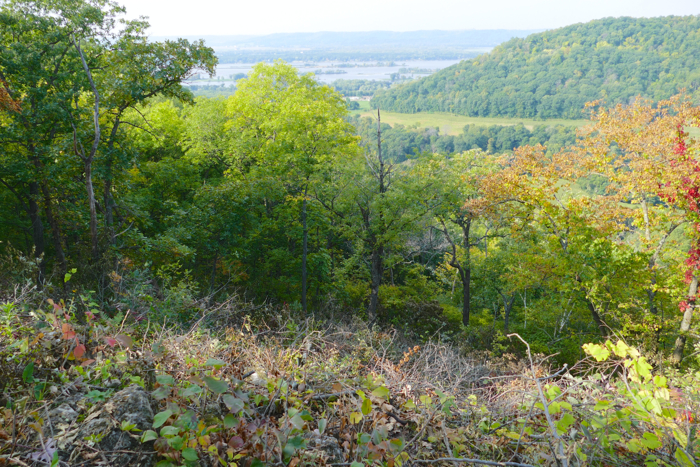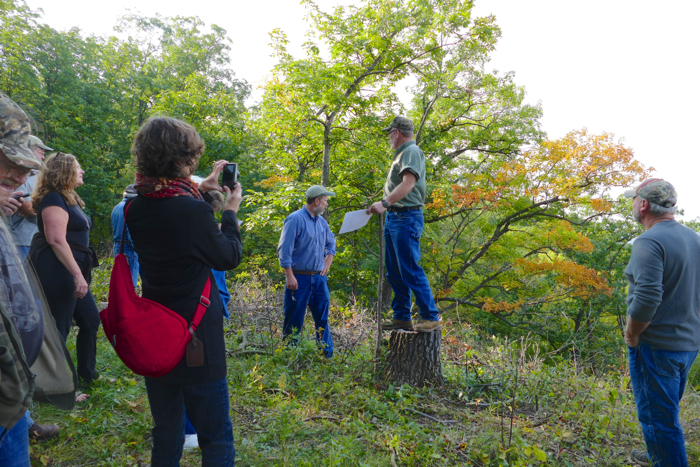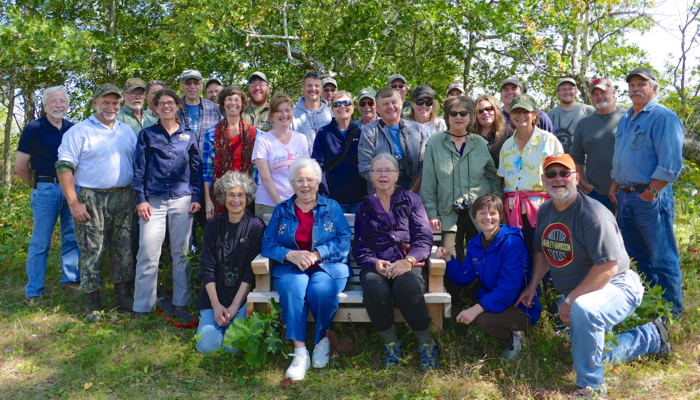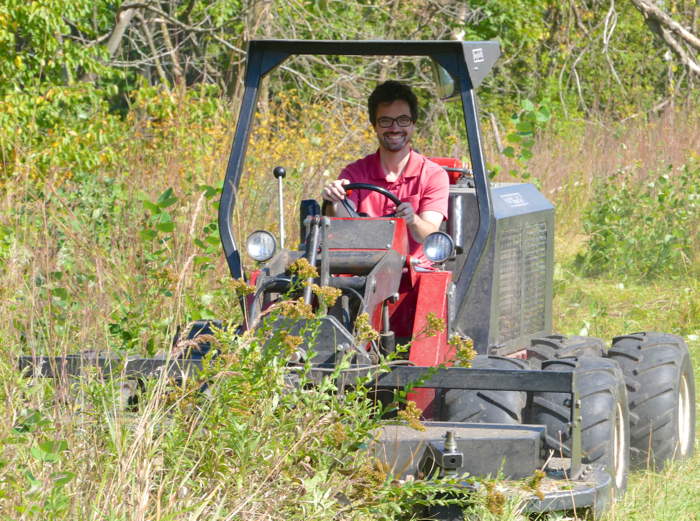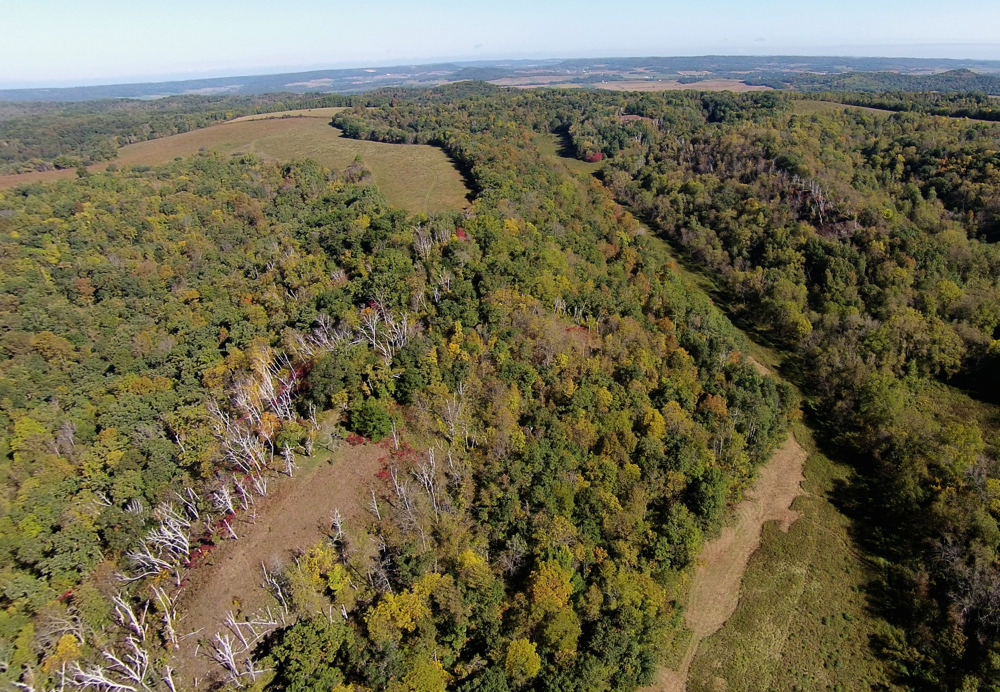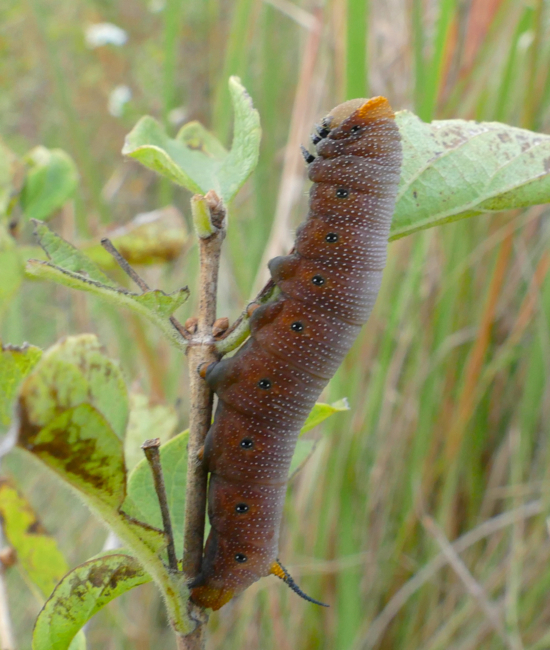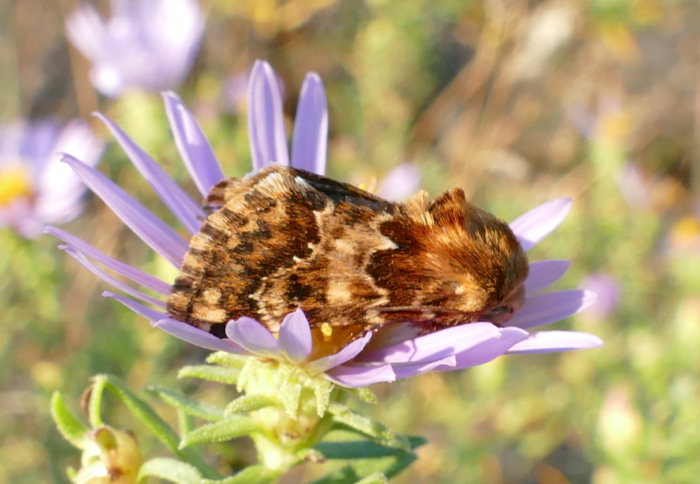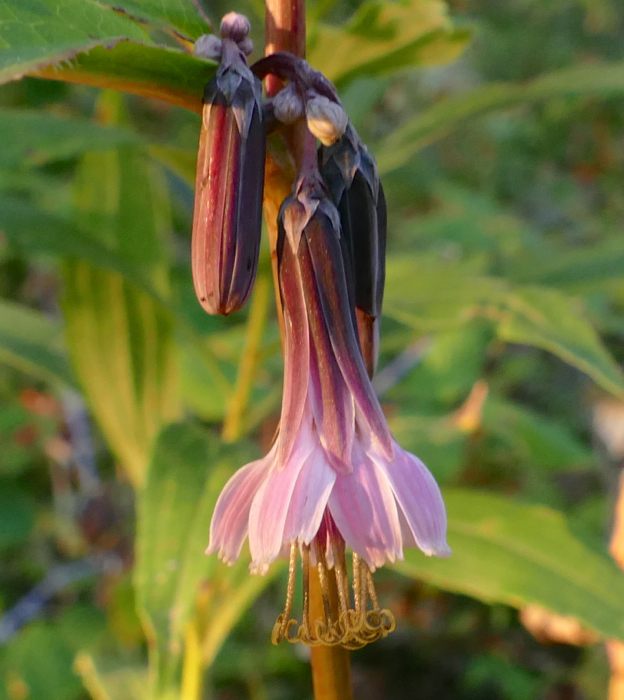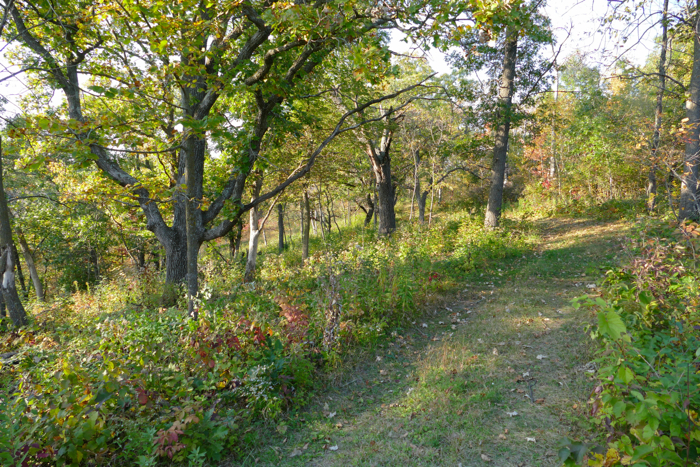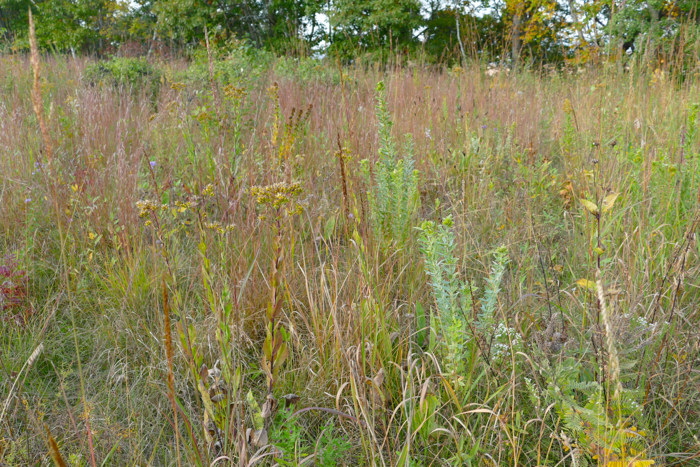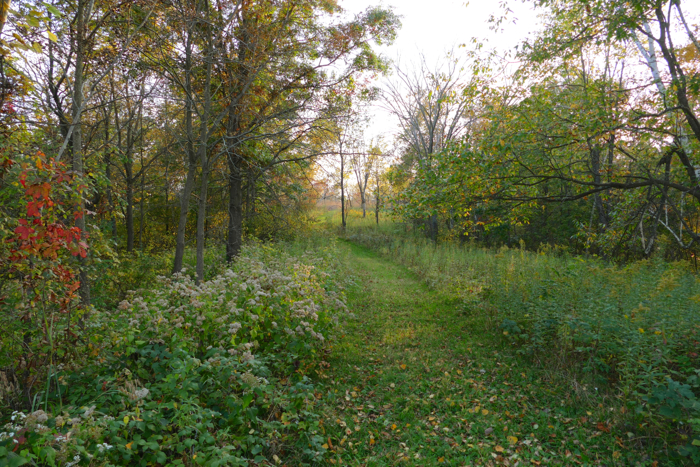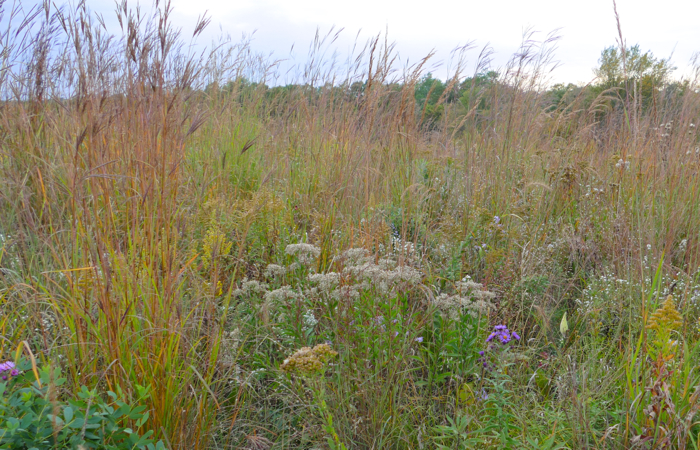It’s been a busy few weeks – we’ve had lots of visitors, and seen several new, interesting creatures.
On September 19th we hosted a Buffalo County Prairie tour. Every year Buffalo and Crawford counties hold a tour of local prairies – alternating between the two counties. This was the year for Buffalo County. In the morning we visited a prairie north of here, and closer to the Mississippi River. It had overgrown savanna remnants that the owner is starting to restore, and beautiful views of a wooded valley and the river.
Dwight talking about his restoration work
There were several blooming Showy Goldenrod plants in the cleared savanna, and one of the bumblebees nectaring on them looked unusual. It turned out to be a Rusty-patched Bumblebee – a species that used to be quite common but has been in a steep decline. There’s a big effort to try to figure out how many of them are still around, and why they’re disappearing.
Rusty-patched Bumblebee – Bombus affinis
In the afternoon the tour came here to the farm. We drove up to Indian Grass Prairie and looked at the dry prairie remnant and the savanna areas that we’ve been clearing.
This is the whole group at the Indian Grass Prairie bench.
Showing some of our savanna work
After the main tour was over, a few people stayed behind to look at more prairies. Here that group at the Hidden Oaks bench.
Right after they left, Richard came down to visit with his friend Rachel.
They both tried out driving the powertrac
And they drove the gator down the dugway – our steepest trail.
Mike has been taking some wonderful photos from his drone – we’ve decided that we like the photos as well or better than the video. This one shows all the places we took the tour group: Indian Grass Point in the foreground, Buffalo Ridge and Western Prairie at the top left, 3 finger valley is the narrow valley down the middle, Hidden Oaks is just to the right at the far end of 3 Finger Valley, and the Knife Edge runs along parallel to 3 Finger Valley and to the right of it. (Click to see a larger image.)
I’ve been finding some unusual insects this week.
This is the caterpillar of a Spotted Apatelodes – a moth that I see at my lights a few times a year. I’ve never found the caterpillar before – I learned afterwards that it has pink feet – I wish I had known that when I was taking photos!
This is a Salt Marsh Moth caterpillar eating the flowers of Rough Blazing Star. Most Blazing Star has magenta flowers, but every once in a while we see a plant with white ones.
This is another Snowberry Clearwing moth caterpillar. The ones I found a few weeks ago were green. According to David Wagner this brown form is more unusual.
This is the caterpillar of a Wavy-lined Emerald moth. Their caterpillars are tiny – this one is about 3/8 inch long. For camouflage, they decorate themselves with pieces of flowers.
My best find was a group of rare moths – Northern Flower moths. I found them on a clump of Aromatic Aster, in the middle of Sumac Prairie – our largest dry prairie remnant. There were 6 or 8 individuals, most resting in the flowers; one actively nectaring. These moths have never been found so far north in Wisconsin before. The closest sighting that anyone knows about is near the southern border of Wisconsin.
I think this is a male – because of the reddish coloring.
I think this is a female.
The other good find – also on Sumac Prairie – was an unusual species of ant. The ants were around the base and clustered along the stems of some small aspens that are growing in the middle of the steepest part of the prairie. (Thanks to James Trager for the ID and the information.) They are Dolichoderus taschenbergi – a prairie ant that was possibly feeding on the honeydew of Poplar aphids.

Here are a few more fall prairie species.
Butterflyweed seeds
Frost Aster with Little Bluestem
Damselfly – possibly a Marsh Bluet
A migrating Monarch
Lion’s-foot
Question-mark Butterfly
Great Plains Ladies Tresses – a late-blooming orchid that grows on our dry prairie points
And here are some fall prairie scenes – I love the colors in the prairie in the fall.
This is the west-facing slope of Indian Grass Prairie – where I’ve been working to clear birches, sumac, prickly ash and honeysuckle. When I started, about 5 years ago, the prairie plants were hidden under all the brush.
Indian Grass savanna – an area Mike and I cleared of brush last fall
Buffalo Ridge Prairie – a 10 year old planted prairie
The Narrows Prairie
Pat’s Prairie – one of our earliest planted prairies – 14 years old
Path to the Knife Edge
Hidden Oaks Meadow – a mesic prairie remnant
Western Prairie
Hidden Oaks Prairie – looking out at the prairie point from the savanna
Hidden Oaks Prairie – view from the prairie point

